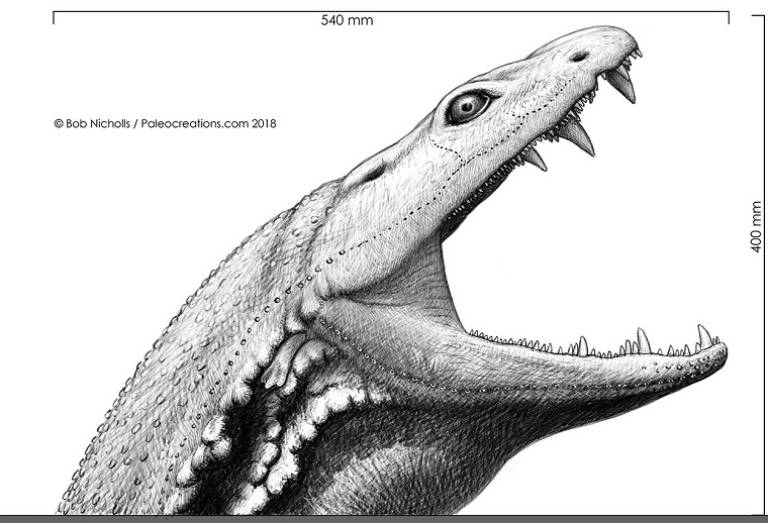Digital reconstruction of skull of early tetrapod Crassigyrinus
24 May 2023
The skull that has been digitally reconstructed belonged to Crassigyrinus, an early tetrapod or vertebrate with limbs and digits, that lived between 320-350 million years ago.

Despite evolving from the first vertebrates to move out of water and onto land, this particular species was aquatic, residing in rivers and coal swamps. Although the species has been known for almost a century, every specimen discovered featured a deformed, "pancake" flat skull, which obscured many of anatomical details and rendered the true shape of the skull unknown.
Researchers CT-scanned several specimens and used software to digitally prepare the fossils on a computer, removing rock matrix and separating individual bones to reveal new features. These features include massive, sharp teeth hanging off the palate, enormous eyes that facilitated vision in the animal’s dark, coal swamp habitat, and a mysterious opening at the front of its snout that likely housed an unknown sensory organ. The animal was large for the time period, measuring 2-3 meters in length.
Subsequently, the researchers digitally reconstructed the skull to remove hundreds of millions of years of damage and deformation, producing the first 3D reconstruction of the Crassigyrinus skull The resulting 3D model of the skull resembles a prehistoric crocodile with large teeth, leading one colleague to describe the species as the "tadpole from hell."
The research was conducted by Dr Laura Porro (Division of Biosciences, UCL), Professor Emily Rayfield (Bristol), and the late Professor Jenny Clack (Cambridge), one of the most esteemed palaeontologists of recent times. Clack, who was the subject of a BBC documentary titled "Beautiful Minds," passed away in March 2020, and the study is dedicated to her.
The research was done in partnership with the Natural History Museum where several of the specimens are housed and the British Geological Survey.
Further information:
- Dr Laura Porro - staff profile
- UCL Division of Biosciences
- Research Department of Cell and Developmental Biology
- Professor Emily Rayfield, University of Bristol
- Professor Jenny Clack - obituary
- Natural History Museum
- British Geological Survey
Image credit:
Bob Nicholls
 Close
Close

